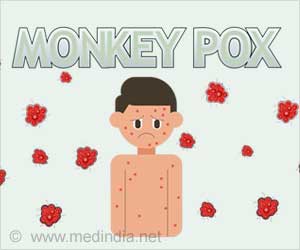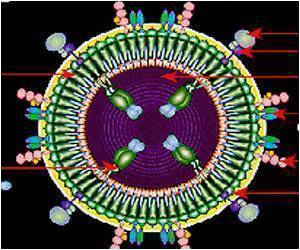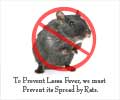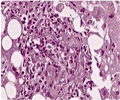World Zoonoses Day 2023 aims at raising awareness about zoonotic diseases. Discover key prevention strategies and the importance of One Health approach.
- World Zoonoses Day 2023 highlights the risks and impact of zoonotic diseases, which are infections that can be transmitted between animals and humans
- Prevention and control strategies such as vaccination, hygiene practices, and wildlife conservation play a vital role in combating zoonotic diseases and protecting both human and animal health
- The One Health approach, recognizing the interconnectedness of human, animal, and environmental health, is essential in addressing the complex challenges posed by zoonotic diseases
World Zoonosis Day 6 July: Online learning supports governments to operationalize a One Health approach in countries
Go to source). In 2023, World Zoonoses Day serves as a crucial reminder of the interconnectedness between humans, animals, and the environment, emphasizing the need for collaborative efforts to address zoonotic diseases.
Zoonotic Diseases: Transmitted Between Animals and Humans
Zoonotic diseases are infections that can be transmitted between animals and humans. These diseases can originate from various sources, including bacteria, viruses, parasites, and fungi. Common zoonotic diseases include rabies, avian influenza, Ebola, Lyme disease, and COVID-19. Zoonotic diseases can be transmitted through direct contact with infected animals, consumption of contaminated food or water, insect bites, or environmental exposure (2✔ ✔Trusted SourceZoonotic Diseases: Etiology, Impact, and Control
Go to source).
Importance of Prevention and Control of Zoonotic Diseases
One Health Approach:
Zoonotic diseases highlight the interconnectedness of human, animal, and environmental health. The One Health approach recognizes that the health of humans, animals, and ecosystems are closely intertwined. By promoting collaboration and communication across disciplines, this approach strengthens disease surveillance, early detection, and response systems.Surveillance and Monitoring:
Effective surveillance systems play a critical role in identifying emerging zoonotic diseases, monitoring disease trends, and implementing timely control measures. Surveillance involves close collaboration between human health, veterinary, and environmental agencies to detect potential threats and prevent outbreaks.Education and Awareness:
World Zoonoses Day provides an opportunity to educate communities about zoonotic diseases, their transmission routes, and preventive measures. Raising awareness about proper hygiene practices, responsible pet ownership, and the importance of vaccination can help reduce the risk of zoonotic disease transmission (3✔ ✔Trusted SourceControl and prevention of emerging zoonoses
Go to source).
Zoonotic Disease Control Strategies
Vaccination Programs:
Vaccination plays a vital role in preventing zoonotic diseases in both animals and humans. Vaccinating domestic animals, such as dogs and cats, against rabies and other zoonotic diseases not only protects animal health but also reduces the risk of transmission to humans. Similarly, livestock vaccination programs can help prevent diseases like brucellosis and avian influenza.Vector Control:
Many zoonotic diseases are transmitted through vectors such as mosquitoes, ticks, and fleas. Implementing vector control measures, such as insecticide-treated bed nets, insecticide spraying, and environmental management, can significantly reduce the transmission of diseases like malaria, Lyme disease, and dengue fever.Hygiene Practices and Food Safety:
Practicing good personal hygiene, such as regular handwashing with soap and water, can prevent the transmission of zoonotic diseases. Proper food handling, including safe meat consumption, thorough cooking, and avoiding cross-contamination, is crucial to prevent foodborne zoonotic infections.Wildlife Conservation and Management:
Protecting wildlife habitats, promoting responsible ecotourism, and implementing wildlife disease surveillance programs are essential for preventing zoonotic spillover events. Proper management of wildlife populations and ecosystems helps reduce the risk of disease transmission to humans.Strengthening Veterinary and Public Health Systems:
Investing in robust veterinary and public health systems is crucial for effective zoonotic disease prevention and control. This includes adequate laboratory capacity, training programs, infrastructure development, and collaborative research initiatives (4✔ ✔Trusted SourceCost-effective control strategies for animal and zoonotic diseases in pastoralist populations
Go to source).
World Zoonoses Day 2023 serves as a reminder of the ongoing threat posed by zoonotic diseases and the importance of proactive measures. By adopting a One Health approach, enhancing surveillance systems, promoting education and awareness, implementing control strategies such as vaccination and vector control, practicing proper hygiene and food safety, and prioritizing wildlife conservation, we can work together to prevent and control zoonotic diseases. On this World Zoonoses Day, let us join forces to protect the health of both humans and animals, recognizing that our interconnectedness is key to a healthier and safer future.
References:
- World Zoonosis Day 6 July: Online learning supports governments to operationalize a One Health approach in countries - (https://www.who.int/news/item/07-07-2021-world-zoonosis-day-6-july-online-learning-supports-governments-to-operationalize-a-one-health-approach-in-countries)
- Zoonotic Diseases: Etiology, Impact, and Control - (https://pubmed.ncbi.nlm.nih.gov/32932606/)
- Control and prevention of emerging zoonoses - (https://pubmed.ncbi.nlm.nih.gov/12970860/)
- Cost-effective control strategies for animal and zoonotic diseases in pastoralist populations - (https://pubmed.ncbi.nlm.nih.gov/27917989/)













